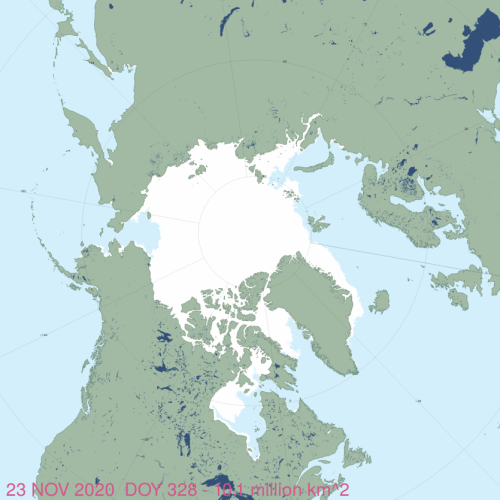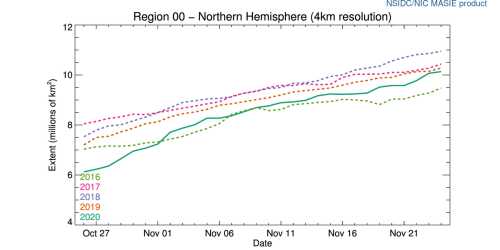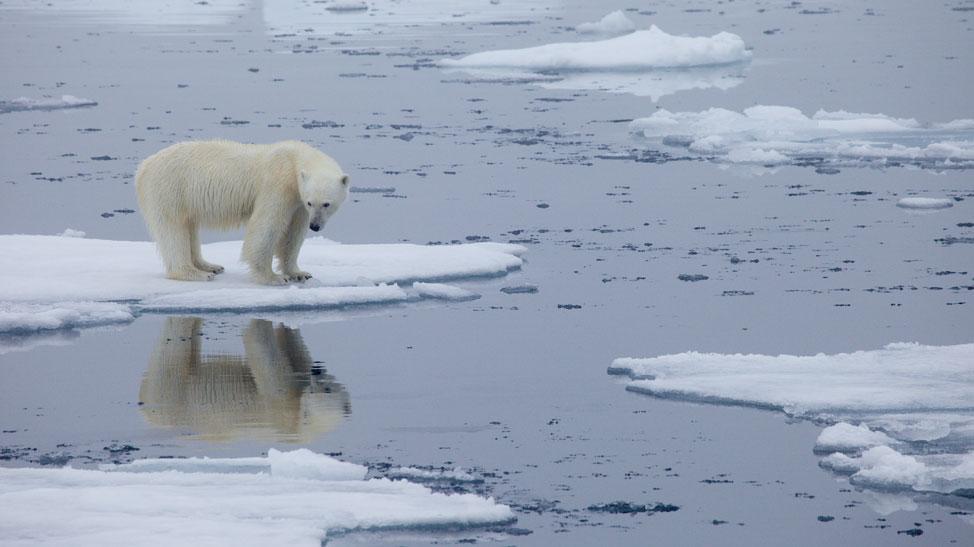- Joined
- Jul 6, 2017
- Messages
- 122,485
- Reaction score
- 19,845
- Gender
- Undisclosed
- Political Leaning
- Undisclosed
You are factually incorrectProven wrong before and will be proven wrong again.
You are factually incorrectProven wrong before and will be proven wrong again.
I have the data record. You have only a model. And it's a model made by the same people whose previous model was debunked by observations and data.You are factually incorrect
No you don't.I have the data record. You have only a model. And it's a model made by the same people whose previous model was debunked by observations and data.



Crockford is a hack that has only seen polar bears in a zoo.Good times for the bears.
Polar bear habitat update for late November
Posted on November 25, 2020 | Comments Offon Polar bear habitat update for late November
Sea ice formation is ahead of usual in some regions and behind in others but overall, sea ice habitat is abundant enough for this time of year for virtually all polar bears across the Arctic to be back out on the sea ice hunting seals.
Overall, there was more sea ice at 24 November 2020 than there was on the same date in 2016, which was the last year that a number of polar bear subpopulations were surveyed, including Western and Southern Hudson Bay, Southern Beaufort, Chukchi Sea (Crockford 2019, 2020), see graph below from NSIDC Masie:
Northern Hemisphere sea ice at 24 November, 2016-2020.
UPDATE 27 November 2020: Problem bear report published today (for week 13, Nov. 16-22) has been added below.
Continue reading




Polar bears again attracted to Russian town by dead walrus Attenborough blames on no sea ice
Posted on December 20, 2020 | Comments Offon Polar bears again attracted to Russian town by dead walrus Attenborough blames on no sea ice
In the news again: Cape Schmidt (on the Chukchi Sea) made famous by Sir David Attenborough’s false claim that walrus fell to their deaths because of lack of sea ice due to climate change when a clever polar bear hunting strategy was actually to blame.
Ryrkaypiy overrun by polar bears Dec 2019 WWF photo
Last year in December (above), some bears were feeding at Ryrkaypiy’s garbage dump and wandering around town after being displaced from feeding on walrus carcasses by bigger, stronger bears on the nearby point.
This year, the town has managed to keep the bears out of town, so while the residents are having no real problems, more than 30 bears have been spotted near town, almost certainly feeding on natural-death carcasses of walrus along the shore (see photo below from 2017 where Ryrkaypiy can be seen in the background).
Continue reading
The bears were adopted by alarmists as symbols of the consequences of climate change. But the "starving bear" footage turned out to be misrepresentation.Did polar bears do something horrible to your family? What's the deal with this obsession on polar bears?
The bears were adopted by alarmists as symbols of the consequences of climate change. But the "starving bear" footage turned out to be misrepresentation.
Actually it's not. Those are what is known as "habituated bears" who have learned to include human sites in their scavenging. They can be quite dangerous. Crockford's blog has several posts on this in some detail.So you keep saying. Then you point to polar bears living off human garbage as some sort of "success story". Which is a pretty f'd up view of nature.
Crockford.Actually it's not. Those are what is known as "habituated bears" who have learned to include human sites in their scavenging. They can be quite dangerous. Crockford's blog has several posts on this in some detail.


How sweet to offer holiday greetings at the same time she’s pushing for a polar bear genocide with fake science.

We celebrate a robustly thriving (probably growing) polar bear population.How sweet to offer holiday greetings at the same time she’s pushing for a polar bear genocide with fake science.
here’s what actual trustworthy news sources say.

Global Warming Is Driving Polar Bears Toward Extinction, Researchers Say (Published 2020)
By century’s end, polar bears worldwide could become nearly extinct as a result of shrinking sea ice in the Arctic if climate change continues unabated, scientists said.www.nytimes.com
Yes, your shitblogs tell you that.We celebrate a robustly thriving (probably growing) polar bear population.
They have still not found a way to recover from the thrashing her research administered to their earlier doomsday predictions.Yes, your shitblogs tell you that.
Funny how no actual scientists who work on the issue are.
"Shitblogs" ...perfect.Yes, your shitblogs tell you that.
Funny how no actual scientists who work on the issue are.
The research published on her shitblog?They have still not found a way to recover from the thrashing her research administered to their earlier doomsday predictions.
Global polar bear abundance ‘best guess’ estimate is 39,000 (26,000-58,000)
This is a sticky post link to my March 2019 essay on polar bear numbers at 2018. View it here.
We celebrate a robustly thriving (probably growing) polar bear population.
REFERENCESThe research published on her shitblog?
Fascinating.
Those are irrelevant.And we bless the polar bears with our GARBAGE DUMPS to help them thrive!
Truly mankind is the gift that keeps giving.
